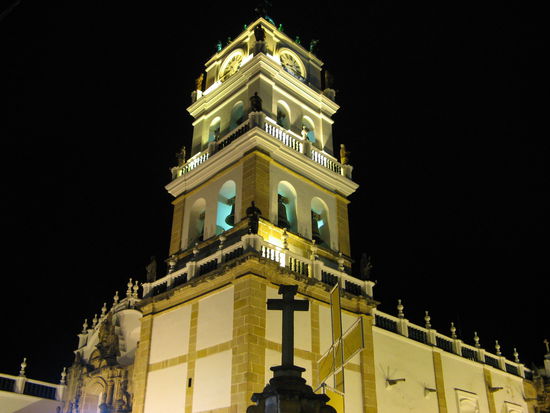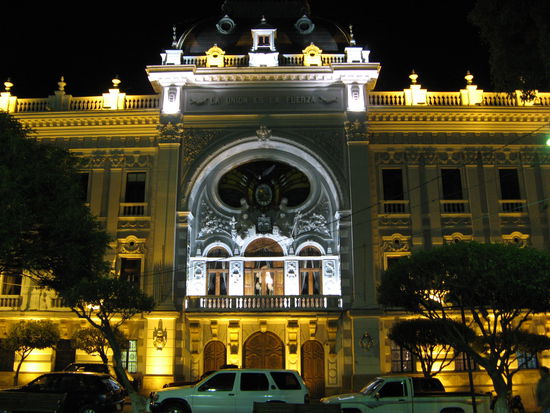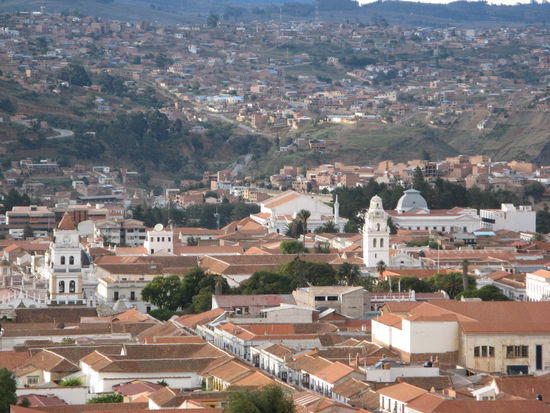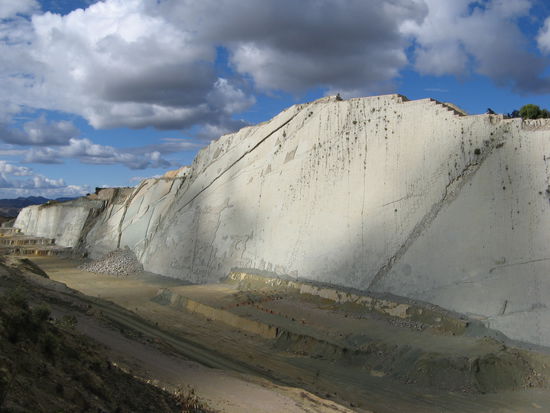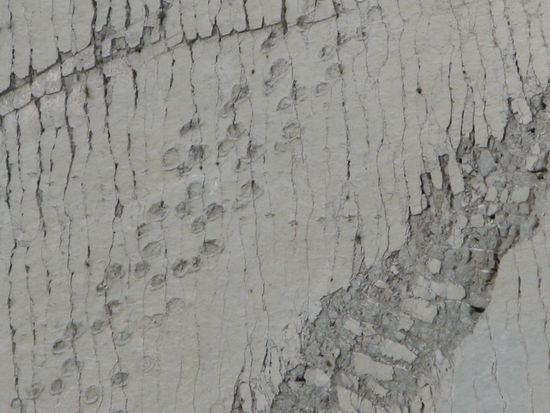Bolivia 2008
Sucre - Nov 19-20
Sucre (250.000 inhabitants, 2800m altitude) was a central place of the movement for independence in Bolivia (1809-1825) and all South America. In recognition of this, it is therefore the constitutional capital of Bolivia. 1839 it was named after Marshall Antonio Jose de Sucre, who was an important leader of the independence movement and the first constitutional president of Bolivia (1825-1828). Simon Bolivar, another even more famous independence leader, who gave name to the country, was only interim president for few months in 1825, as he was already the president of Colombia. Both Simon Bolivar and Antonio Jose de Sucre were actually nationals of Venezuela, while in 1828 Antonio Jose de Sucre left Bolivia disappointed and became then a politician in Colombia (he also had been president of Peru for two weeks in 1823). Does all this sound complicate to you? Well, more about Bolivian presidents in my travelogue of Nov 21 (from La Paz). The executive and legislative government branch were moved to La Paz in 1898.
Sucre, located on seven hills and comparing itself to Rome, is a quite international city with two universities, one thereof founded in 1624. Most of the Europeans who live in Bolivia, are in Sucre. At an altitude of 2800m, Sucre has a perfect intermediate climate, not too hot as Santa Cruz and not so cold as La Paz can be. However, Sucre also lies between the political frontiers. The current president, Evo Morales, is in the western highlands almost considered as a god, while the political opposition in the eastern lowlands call him a thief. In Sucre both political views exist, which in recent years gave often rise to severe riots and street fights.
Cal Orck´o is a cement factory near the city limits, where dinosaur footprints were detected in an almost vertical layer of rock. It is explained as the shore of a lake more than 60 million years ago, when the Andes did not yet exist. Sedimentation preserved the footprints, while the tectonical formation of the Cordillera moved the horizontal layer into its current vertical position.
I´m not in the mood for another 15-hour bus ride in a loo-less bus. Rather I preferred to stay one more night in the really wonderful hotel "La Posada" and then just go 1 hour by plane on the next morning. But the problem is that, different from oher countries, where flight passengers may have no rights, the passenger rights in Boliva seem to be even below zero. Flight cancellations due to weather can occur, and the airline then makes no attempts to carry out the flight at a later time of the day or to compensate the passengers. They may eventually be re-booked on a flight some two days later, or whenever there are seats available. Having a confirmed reservation for a fixed day does not necessarily mean that you will for sure travel within the same week. Needless to say that I studied the weather predictions very carefully before purchasing the ticket. Let´s see if the flight turns out as a joker, saving me the 15-hour bus ride without WC, or whether I got the ´Arschkarte´ and then still have to go by bus. For sure, the flight would become a historical experience. It is operated with a Boeing 727, a jet model that was phased out by most airlines already in the mid 80s of the last century.
Altogether, I enjoyed the days in Sucre very much. Not too many things occurred, but it were nice days to relax (in the wonderful hotel "La Posada"), while I could recover from an injury (at my knee) which I got when climbing through the mines of Potosi.
Sucre is also called "The White City". In the mid left is "La merced" church, to the mid right the central square (Plaza 25 de Mayo) with the cathedral and three government buildings.
View into the cement factory. Dozends traces of dinosaur footprints were found in the 70-degree inclined wall.
| Start of journey: | Nov 12, 2008 |
| Duration: | 15 days |
| End of journey: | Nov 26, 2008 |
